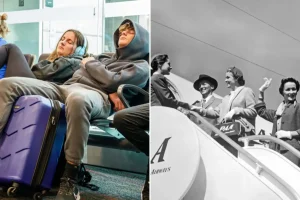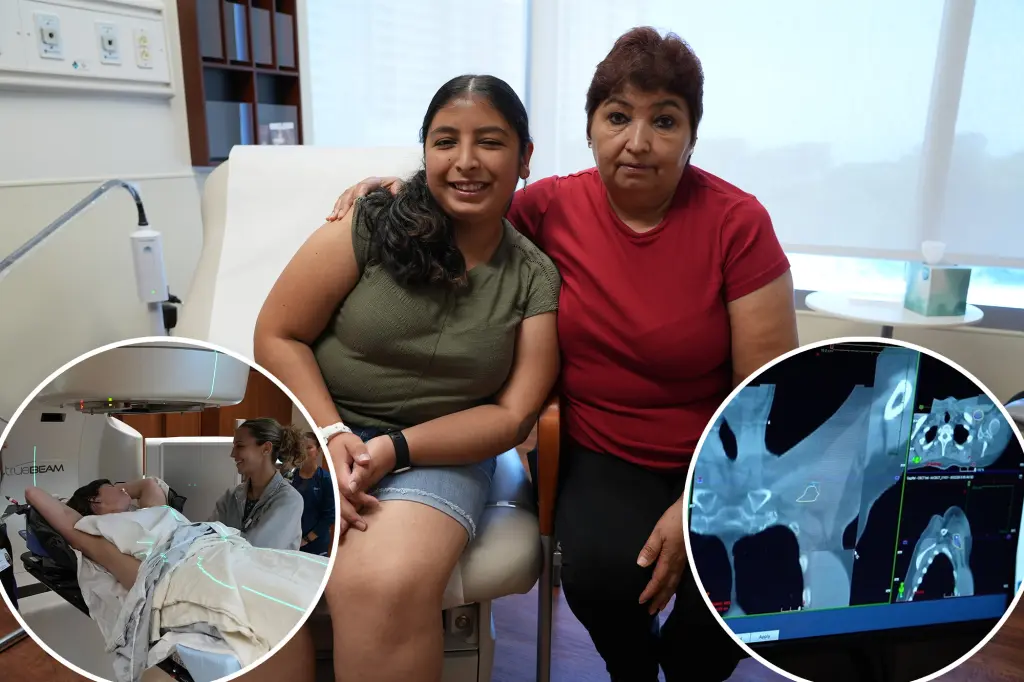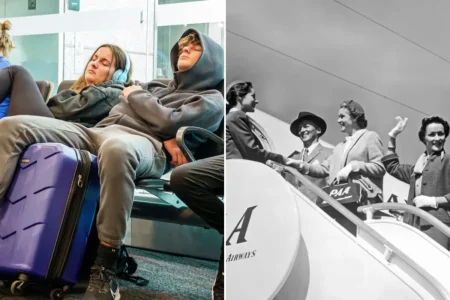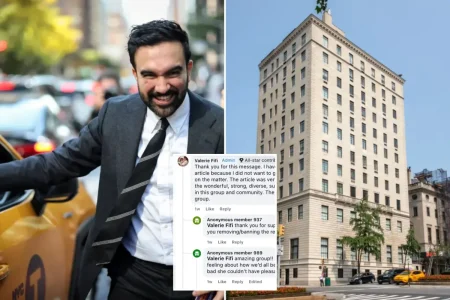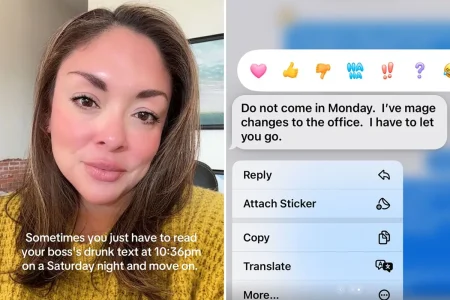A Teen’s Journey Through Rare Cancer: Finding Hope Amid Uncertainty
In the spring of 2020, while most teenagers were grappling with the challenges of virtual learning and pandemic isolation, 14-year-old Liliana “Lili” Castaneda from Chicago found herself navigating a far more daunting reality. What began as an exciting milestone—what she thought was her first period on her 14th birthday—quickly spiraled into a medical mystery that would test her resilience for months. Born with Turner’s syndrome, a genetic disorder that typically causes underdeveloped ovaries and delayed puberty, Lili initially saw the blood as a hopeful sign. “I was happy at first because I thought it was my period,” she shared. This small flicker of normalcy, however, soon gave way to concern as the bleeding persisted and intensified. At its worst, she was changing menstrual pads every 10 to 15 minutes and experiencing waves of dizziness whenever she stood up. Despite these alarming symptoms, her local doctor attributed her condition to “pandemic stress,” particularly given the circumstances—her father had recently tested positive for COVID-19, and her education had been disrupted by lockdowns. But Lili’s intuition told her something more serious was happening. “It couldn’t just be stress,” she remembered thinking. “It felt like it had to be something more.”
The journey to diagnosis proved frustratingly slow and convoluted. When the bleeding didn’t subside after a week, Lili’s doctor prescribed birth control pills, which reduced but didn’t eliminate the bleeding. For five more months, she endured continuous spotting while doctors ran tests that yielded no answers. An ultrasound eventually revealed something unusual in her vaginal tract, leading her physician to ask if she might have left a tampon inside—a suggestion that made little sense to Lili, who had never used tampons. Finally referred to a specialist, she underwent a pelvic exam and biopsy of her vaginal lining. The results were shocking: clear cell carcinoma of the vagina, an extremely rare form of cancer typically found in postmenopausal women in their 60s. For Dr. Dario Roque, the gynecologic oncologist who would eventually treat Lili at Northwestern Medicine’s Lurie Cancer Center, she represented an exceptional case. “In my 15 years of practicing medicine, she’s the youngest patient I’ve treated for clear cell carcinoma,” he noted. Despite the terrifying diagnosis, Lili felt a paradoxical sense of relief. “It was shocking,” she admitted. “I was scared, but I was more relieved I had answers.”
Even after diagnosis, Lili faced additional hurdles. Because her cancer wasn’t classified as pediatric, children’s hospitals in the Chicago area wouldn’t accept her as a patient. She also needed healthcare providers who could communicate effectively with her Spanish-speaking parents. Eventually, she found her way to Northwestern under Dr. Roque’s care. The medical team discovered a tumor roughly the size of a golf ball on her cervix. According to Dr. Jonathan Strauss, her radiation oncologist at the Lurie Cancer Center, “At the time of her diagnosis, the tumor was too large for us to surgically remove it, so we had to use external and internal radiation therapies to help shrink it.” Her treatment plan was intensive: 30 rounds of radiation and five rounds of chemotherapy. Throughout these grueling sessions, Lili found comfort in Taylor Swift’s music, which played through her headphones as medicine flowed through her veins. Mercifully, the persistent bleeding that had plagued her for months stopped after the first round of treatment—a small victory in her larger battle.
The physical toll of cancer treatment is well-documented, but the emotional impact on a teenager still forming her identity deserves special recognition. Lili navigated these waters during an especially isolating time—the height of the COVID-19 pandemic—when normal teenage experiences were already severely limited. Instead of worrying about school dances or social media, she confronted mortality at an age when most feel invincible. Yet throughout her ordeal, she demonstrated remarkable courage and self-advocacy. When doctors initially dismissed her symptoms as stress-related, she persisted in seeking answers. When the medical establishment struggled to categorize her rare case, she refused to be overlooked. This determination likely saved her life, as early detection and treatment are crucial factors in cancer outcomes. By March 2021, nearly a year after her symptoms first appeared, Lili received the news she had been fighting for: she was officially cancer-free. “I was so relieved,” she recalled of that moment. “I was grateful. I was excited.”
Now 19 years old, Lili has transformed her harrowing experience into purpose and direction. Inspired by the medical professionals who guided her through treatment, she is pursuing a nursing degree in college. “I can’t wait to become a nurse and help other kids navigate their medical journey,” she explained. Her ambition reflects a profound empathy born from personal suffering—she understands firsthand the fear, confusion, and vulnerability that patients experience. Beyond her career aspirations, Lili has embraced an advocacy role, working to raise awareness about clear cell carcinoma and its symptoms. This rare cancer can manifest through abnormal bleeding between periods or after menopause, pain, and urinary issues. By sharing her story openly, she hopes to empower others—particularly young women—to trust their instincts about their bodies and seek medical attention when something feels wrong.
Lili’s message to others is both simple and powerful: “Don’t be ashamed. Never brush anything off. Just get it checked.” These words carry the weight of her experience—months of suffering that might have been shortened had her concerns been taken seriously from the start. Her story serves as a compelling reminder of the importance of medical self-advocacy, particularly for women whose symptoms are too often dismissed as emotional or psychological in origin. It also highlights critical gaps in our healthcare system, including the challenges faced by patients with rare conditions who may fall between pediatric and adult care models, and the additional barriers encountered by families with limited English proficiency. Yet ultimately, Lili’s journey is one of triumph—not just over cancer, but over doubt, dismissal, and fear. From a frightened 14-year-old girl whose symptoms were attributed to “pandemic stress” to a confident young woman pursuing a career in healthcare, she embodies resilience and hope. Her transformation from patient to future nurse represents a full-circle moment that promises to benefit countless others facing their own medical uncertainties.

